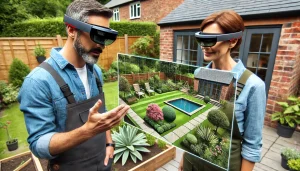Visualizing a garden before its construction has always been challenging in commercial landscaping. However, with the advent of augmented reality (AR), this challenge is becoming a thing of the past. Consequently, AR technology revolutionizes how landscapers and garden designers plan and execute their projects. It provides a clear and immersive way to see how a garden looks and feels before planting a single plant. In this blog, we explore the definition of AR, its benefits in landscaping, real-world applications, potential challenges, and future trends, offering a comprehensive guide for commercial landscapers, garden designers, and property developers.
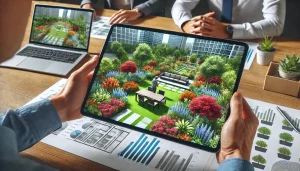
What is Augmented Reality?
Augmented reality (AR) is a technology that overlays digital information—such as images, sounds, or other data—onto the natural world through a smartphone, tablet, or AR glasses. Unlike virtual reality (VR), which creates an entirely artificial environment, AR enhances the real-world environment, providing an interactive and immersive experience.
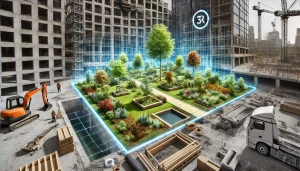
Benefits of AR in Landscaping
First and foremost, AR allows landscapers and clients to see a 3D model of the proposed garden in its actual location. This enhanced visualization helps in making more informed decisions about design and layout. Additionally, AR bridges the gap between designers and clients, offering an easily understood visual representation, thereby reducing misunderstandings and revisions. By visualizing the project beforehand, landscapers can identify potential issues early, optimizing the planning and execution process. Furthermore, AR can help estimate materials and labour accurately and reduce waste and unforeseen expenses, leading to significant cost savings.
Real-World Applications
Several companies are already leveraging AR in landscaping. For instance, ArborScape, a Colorado-based company, uses AR to show clients how different tree species will look in their commercial spaces. Clients can see trees’ growth and seasonal changes over time, helping them choose the suitable species for their needs. Similarly, LandFX, a landscape design software, incorporates AR features, allowing designers to create and visualize intricate garden designs directly on-site through a tablet or AR glasses. Additionally, iScape is an app that lets users create and visualize their landscape designs in real time, benefiting smaller commercial projects and garden designers looking to present their ideas dynamically.
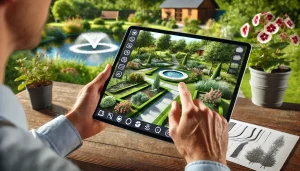
AR Tools and Software for Landscapers
Among the available tools, SketchUp is known for its 3D modelling capabilities and now offers AR features to visualize designs on-site. Augment, another AR platform, allows users to upload 3D models and visualize them in real-world settings, making it ideal for presenting landscaping projects. Moreover, Houzz Pro, while primarily a platform for home design, includes AR tools that landscapers can use to show clients how different elements will look in their gardens.
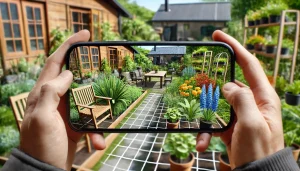
Potential Challenges
While AR offers many benefits, there are also challenges to consider. Implementing AR requires specific technical know-how, which might be a barrier for some landscapers. Furthermore, high-quality AR equipment and software can be expensive, potentially limiting its accessibility for smaller firms. Ensuring the AR models accurately reflect real-world conditions is crucial but challenging, thus requiring precise execution.
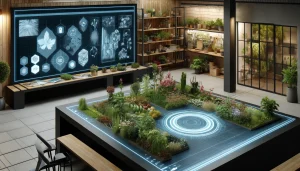
Future Trends
The future of AR in landscaping looks promising, with several exciting developments on the horizon. For example, the integration of AR with artificial intelligence (AI) could offer even more precise and customized landscaping solutions. As technology advances and becomes more affordable, AR tools are expected to become more accessible to smaller firms and individual designers. Additionally, AR can promote sustainable landscaping practices by helping designers visualize and implement eco-friendly solutions.
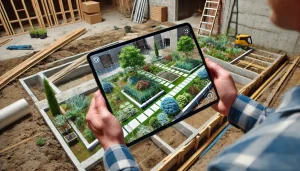
Expert Insights
John Smith, a leading landscape architect, states, “Augmented reality is transforming how we approach garden design. It enhances our creativity and ensures our clients are delighted with the result.” In a case study by GreenScape Designs, implementing AR in their planning process reduced project revisions by 30%, saving both time and money.
In conclusion, augmented reality is a game-changer for the landscaping industry, offering a powerful tool for visualizing commercial gardens before their construction. By embracing this technology, landscapers and designers can enhance their planning processes, improve client satisfaction, and stay ahead of industry trends. As AR continues to evolve, its impact on landscaping will undoubtedly grow, paving the way for more innovative and efficient design solutions.
